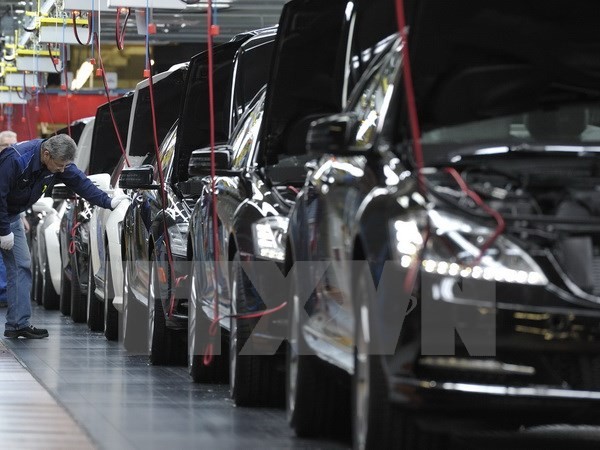(VOVworld) – By the end of this year, the ASEAN Economic Community (AEC) is scheduled to take shape under which the tariffs of many items will be removed or slashed to 5%. In less than 3 years, 97% of goods imported from ASEAN members will be exempted from duty. This will create both opportunities and challenges for Vietnamese businesses.

Tariffs on many products, predominantly automobiles and auto components, will be cut by 2018. (Photo: AFP/VNA)
|
Pursuant to a commitment under the ASEAN Trade in Goods Agreement, as of late last year, Vietnam had reduced tariffs on 72% of its total export and import products, to zero.
Tariffs on many products, predominantly automobiles and auto components, will be cut by 2018.
Luong Hoang Thai, an official at the Ministry of Industry and Trade, called this an opportunity for Vietnamese processors to reduce material spending, cost prices, increase competitiveness, and expand their market.
Thai noted that “ASEAN will create a common production zone. The plan also matches our idea of attracting more foreign investment through which to increase economic development and cooperation. The ASEAN Community’s plan on duty elimination towards a single market will facilitate a favorable environment for commercialization, remove non-tariff barriers, and benefit small and medium-sized enterprises.”
Thai said deep cuts in tariffs meant more ASEAN goods and services would flow into Vietnam and exert pressure on Vietnamese firms.
Deputy Director of the International Cooperation Department at the Finance Ministry Ha Duy Tung said “Vietnam’s policy is to impose a tax on finished-products higher than on materials to encourage the development of local assembly and production. But according to Vietnam’s commitments, the duties of both end-products and materials will be slashed to zero which will cause difficulties for many material manufacturers on top of small scale production, limited finance, technology, and information access.”
Ho Sy Truc, President of Hoang Mai Company, emphasized on the current difficulty that “regional businesses have great experience due to their long development history, prestige, and have been successful in trademark building. We need breakthroughs to penetrate regional markets and we need help from the government to realize this goal.”
Vo Tri Thanh, Deputy Director of the Central Institute for Economic Management, said “Vietnamese SMEs should mobilize their best human resource to understand state policies, legal frameworks, and ways of integration, production, and trading ahead of designing strategies, visions, and the current competitive trend.”
With over 600 million consumers and a GDP worth more than 1.3 trillion USD, the ASEAN Economic Community is seen as the world’s most vibrant economy. ASEAN is the second largest goods supplier and the third largest export market for Vietnam.
To make full use of the domestic market and penetrate other regional markets, Vietnamese firms should improve labor productivity and reduce production costs and cost prices but ensure the quality of their goods.